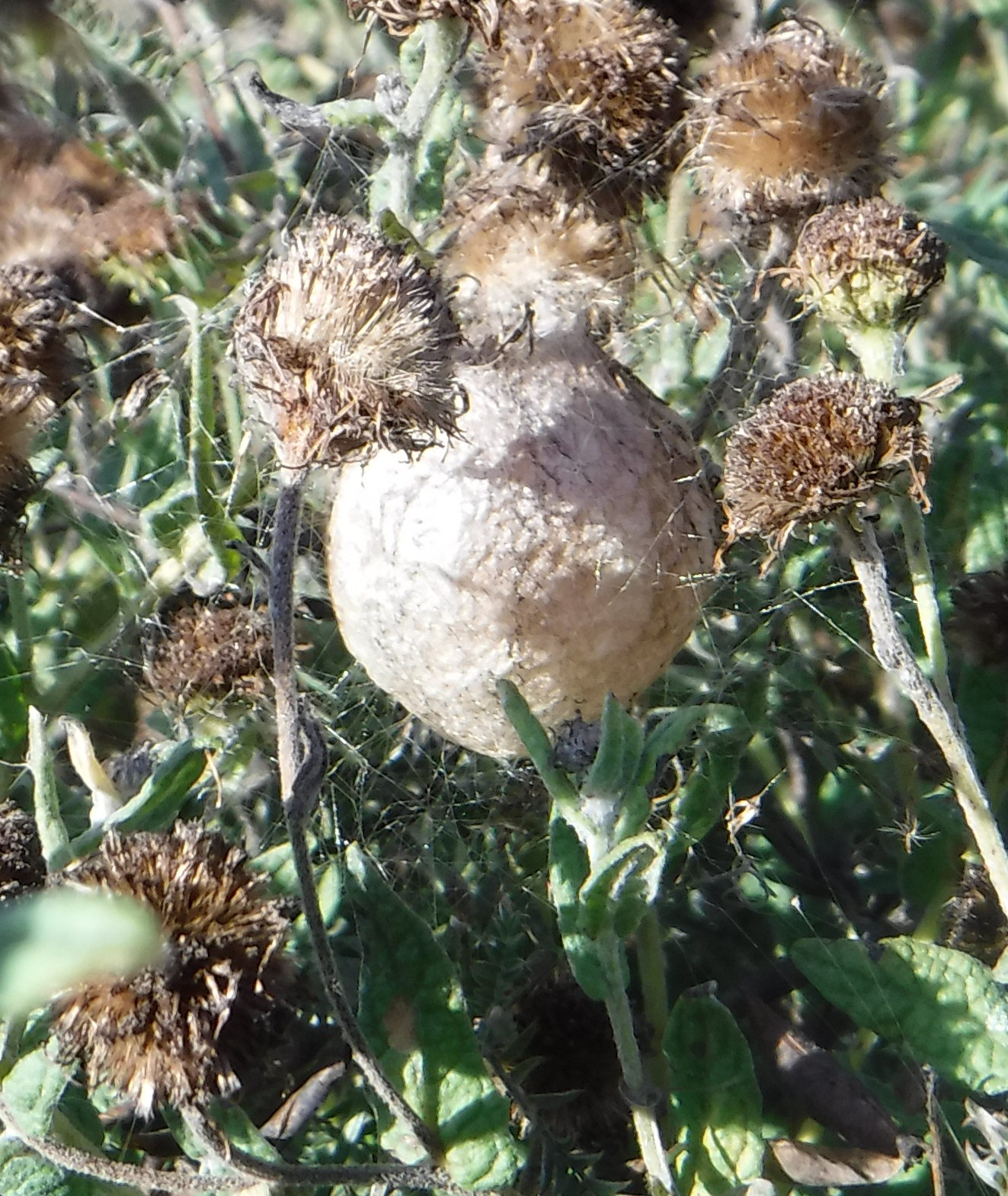
Total monthly rainfall: 52.5 millimetres. Maximum daily rainfall: 12.5 millimetres (29th September). The first three weeks of the month were very dry, but 48 millimetres fell between the 23rd and 30th and there were 13 days with 100% cloud-cover for at least part of the day. Maximum temperature on the warmest days was 26°C on September 14th and 15th, while on the coldest days it was 16°C on the 9th, 29th and 30th. Winds between the 23rd and 29th were fresh-to-strong – bringing down green leaves, twigs and branches.
September is the start of meteorological autumn, when we begin to lose more species than we gain. Wildflower species that remain in flower do so in very small numbers, caused by colder weather and autumn sheep grazing. We have listed those still on-site at the end of this report.
-
 Dark bush cricket on reptile shelter -12th Sept
Dark bush cricket on reptile shelter -12th Sept
Dark bush cricket on reptile shelter -12th Sept
Dark bush cricket on reptile shelter -12th Sept
-
 Hops -10th Sept
Hops -10th Sept
Hops -10th Sept
Hops -10th Sept
-
 Wasp spider coccoon among fleabane - 17th Sept
Wasp spider coccoon among fleabane - 17th Sept
Wasp spider coccoon among fleabane - 17th Sept
Wasp spider coccoon among fleabane - 17th Sept
-
 Willow emerald damselfly on willow branch - 15th Sept
Willow emerald damselfly on willow branch - 15th Sept
Willow emerald damselfly on willow branch - 15th Sept
Willow emerald damselfly on willow branch - 15th Sept
https://www.kentfieldclub.org.uk/news/little-barton-farm-wildlife-notes/september-2019#sigProIddade2eb80d
We have seen no new butterfly species this month, meaning that we failed to see the clouded yellow this year. Butterflies still about during the month were common blue on the 1st, green-veined white (13th), large white and red admiral (15th), painted lady, small tortoiseshell and meadow brown (17th), comma (20th), peacock (23rd), small copper (25th), plus speckled wood and small white on the 30th. Some of these should continue into next month. Moths seen this month as first-sightings were a snout moth (1st), copper underwing (16th), and lunar underwing (30th), bringing the annual moth total to 40 species so far.
With no new dragonfly species seen this month our dragonflies remaining on site were blue-tailed damselfly on the 4th, azure damselfly (6th), brown hawker (19th), southern migrant hawker (21st), southern hawker (25th), common darter and ruddy darter (28th), plus white-legged damselfly, willow emerald damselfly, and migrant hawker (30th). Some of these too should continue into next month
Insects first seen in spring, such as crane-flies and mayflies have returned this month in large numbers. They were joined by a very long-legged crane fly on the 23rd. On the 12th we found a brown bush cricket resting on top of a reptile shelter, while on the 20th we found five devil’s coach horses drowning in the chickens’ water. Two survived and were released.
The last creatures worthy of mention were our last sighting of swallows as they left for their journey south on the 12th; the first wasp spider cocoon among fleabane on the 17th; and the first hedgehog of the year, found by our dog on the lawn at 10pm on the 27th.
Signs of autumn among our shrubs and trees began as follows:
1st - Yellow poplar leaves falling into a woodland pond.
5th - First conkers ripe and falling; ripe acorns with some gall-wasp damage; hazel and hawthorn leaves beginning to turn yellow.
6th - Hornbeam and silver birch leaves turning yellow.
7th - Dog rose-hips ripe; field maple leaves tuning orange; wild cherry leaves turning red.
16th - Horse chestnut leaves turning brown.
25th - Poplar leaves full yellow tint.
List of wildflowers still in bloom in small numbers:
Red and white deadnettle, redshank, dandelion, sow thistle, nipplewort, speedwell, yarrow, knapweed, common fleabane, water-mint, oxeye daisy, common daisy, red clover, rough hawkbit,
mayweed, herb robert, bird’s foot trefoil, feverfew, and Canadian fleabane. Thistle, ragwort, and bristly ox-tongue have been removed or topped in an effort to prevent seeding.

